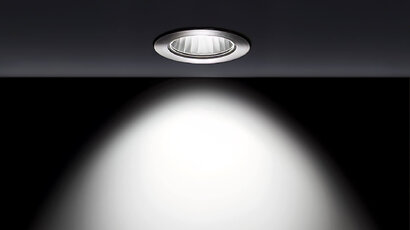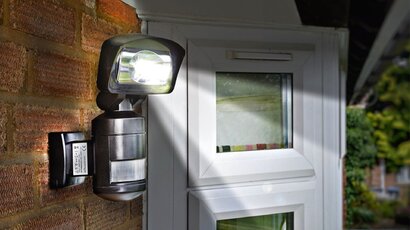When decorating your home, finding the right kind of lightbulbs is of crucial importance. But how do you know what works best?
There has been a significant change in home decoration and how people use lights in the past decades. You no longer have to restrict yourself to using antique lights but have other options to experiment with.
However, the primary competition remains between LED and regular lightbulbs to date. But choosing between them can be challenging, especially if you don’t know anything about lights.
We have designed this guide to help you with everything you need to know about both varieties. This would help you resolve the debate and choose the best one according to your needs.
So, without any more delay, let’s check them out!
There is no doubt that LEDs have entirely revolutionised the lighting industry, but do you know what they are? LEDs (Light Emitting Diodes) are high-quality lights with not one but two electrodes, and the electricity flows through them in a single direction. And unlike regular bulbs, there are no visible wire filaments in them.

One of the biggest reasons for choosing LEDs over incandescent (regular) bulbs is that they last longer. Compared to all other lights, LEDs have a significantly longer lifespan. To give you an estimate, LEDs can easily manage 60,000 to 100,000 hours.
Besides, users love that they hardly require maintenance and minimal spending once installed.
But leaving everything aside, the primary reason for choosing LEDs over other lights is that they are ultra-energy-saving. When you start using LED lights, you will find minimal energy wastage in the form of heat or radiation. Meaning they are exceptionally energy efficient.
If you plan to install one in your kids’ room, they will love the broad spectrum of colours. These lights offer, which make them perfect for mood or ambient lighting.
These options are smaller than their counterparts and don’t require a cool-down period. Now, that’s pretty convenient.
Like most lights, LEDs are not entirely free of disadvantages. And before getting your hands on one, you should know about the same.
The first thing to consider is that light emitting diodes are relatively expensive and might burn a hole in your pocket. So, if you plan to replace all the incandescent light bulbs at home with LEDs, we recommend keeping this factor in mind. It is best that you change them gradually and not at a go to avoid spending too much money together.
But then again, the electricity consumption of these bulbs is relatively low, which would compensate for the cost.
We are all familiar with the regular or incandescent bulb that has been around for quite a while now. Unlike LED bulbs, incandescent lighting has a glowing filament in the centre, and the light flows through them. The filaments are a significant component involved in making the bulb glow.

Honestly, there’s nothing more affordable than an incandescent light bulb to brighten your room. Their manufacturing costs are pretty low, resulting in low retail prices.
Apart from that, we like the kind of versatility an incandescent bulb can put on the table. They are readily available but also suitable for light outputs and voltage conditions.
As we have already mentioned, one of the main reasons people shift to LED lights is their high energy-saving capacity compared to incandescent lights. The latter’s efficiency can sometimes be as low as 10 lumens/watt. So, you can understand that there is a significant waste of energy because most of it is spent on heat generation.
And because of this, the cooling period of the bulbs is relatively high. Hence, touching them by mistake before they have cooled increases the chances of hurting your fingers.
These bulbs are not long-lasting. On average, they can function for around 1,300 hours. But given that they are cheap, that’s not a bad deal. The inconvenience arises when you realise that you must change the bulbs frequently.
If you hate visiting the market to pick up light bulbs now and then, you should purchase them in bulk.
By now, you must have understood that LEDs are a better option. And because of that, it gets challenging to find anything but LED light bulbs on the market these days. However, there are still a few burning questions that we would like to answer to help you make a fully-informed decision.

As stated above, LEDs offer a diverse range of colours. So, you can keep it cool white or change it to warm yellow according to your requirement. You can even opt for smart LED bulbs if you want further flexibility. This way, you can brighten or dim them as per your need.
Long story short, LED lights usually don’t harm your eyes. If you work for long hours on the laptop or computer, we recommend opting for bright lights to adjust their brightness as and when required. This way, you can provide optimum comfort to your eyes.
Rest assured that you do not have to change the existing light fixtures if you plan to shift to LEDs. These bulbs will easily fit into all regular incandescent fittings, saving you from the extra cost of buying new fixtures.
Compared to bare lightbulbs and even CFL bulbs, the LED variants can easily outshine them in terms of brightness. The latter is capable of producing more lumens at the same wattage. And because they require less energy to make heat, LEDs (light emitting diode) can retain their brightness for longer.
With that, we have reached the end of this informative guide between a regular and an LED bulb. Both emits visible light. However, a classic light bulb will use more energy, while LEDs save energy.
Selecting a lightbulb should not be too difficult after reading this guide. If you plan to shift from one type to another, ensure that you do not throw the previous bulbs away. Some bulbs have harmful vapours stored in them and can cause environmental damage.
If you are having trouble installing your new lightbulb, you can always call your local electrician. And for more interesting information on LED lighting, read our guide on the main causes of LED light switch delay!
Until next time!
{{author:bio}}
Find them on their website: Precision Electrical & Plumbing, Facebook and LinkedIn.
Are you on the lookout for commercial lighting ideas to revamp your space in 2022? Take a look at this guide for the best inspirational ideas this year.
Read MoreAre you worried about the frequent time delay when switching on the LED lights? This problem is more common than you might think, so let's learn how to fix it!
Read MoreHave you ever wondered how motion detection works? Well, read our guide as we detail how these nifty lighting features work their magic and how they can benefit you!
Read More


